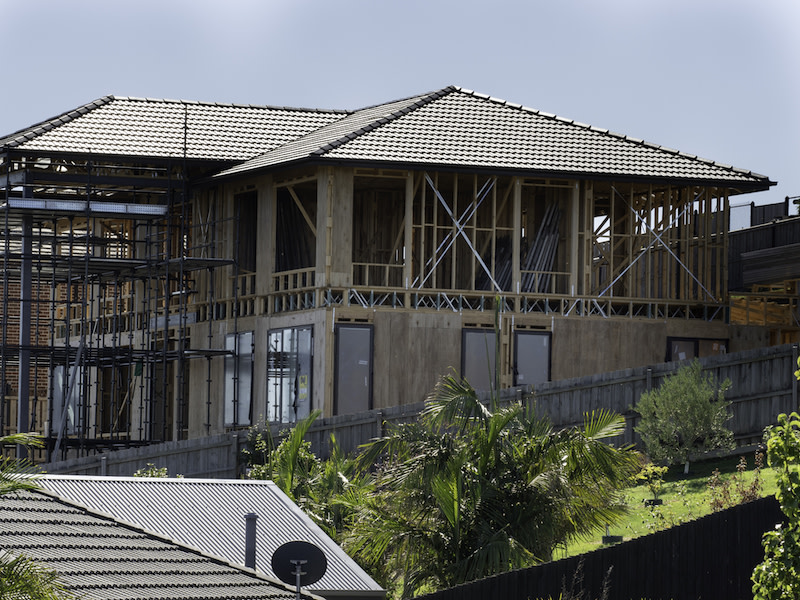The outlook for construction is brighter thanks to historically high government spending and the ever-increasing demand for housing, according to a new report.
Rider Levett Bucknall’s (RLB) First Quarter 2023 Oceania Report found that while the building sector continued to grapple with the “persistent influences of high escalation, industry solvency, low productivity, and labour shortages”, the outlook was positive.
RLB director Oceania R&D Domenic Schiafone said governments across all levels in Australia were prioritising infrastructure spending.
“This includes projects related to roads, rail, utilities, renewable energy and social infrastructure like schools, hospitals and recreational facilities,” he said.
“This commitment to infrastructure development is expected to continue to inject significant funds into the industry, creating a steady stream of projects for construction companies.
“The Australian construction industry is at a pivotal juncture.
“Effective strategies from all levels of government, contractors, and developers are essential for steering the industry towards a period of sustained growth.
“By embracing adaptability, innovation and a commitment to sustainability, the construction industry will build a resilient path forward.”
The RLB Report said that construction market escalation forecasts for 2024 indicated a downward movement closer to historic levels, following the highs of 2022.
Adelaide and Townsville are forecast to experience the highest increase in tender prices across 2024 with a respective estimated 6.5 per cent and 7 per cent increase.
According to the report, the South Australian economy continues to operate at near capacity with unemployment at low levels. Throughout 2024, labour shortages and rising wage costs, fuelled by robust industry demand, will persistently drive-up prices.
In Adelaide, market volatility continued in the first quarter, with continued labour shortages impacting pricing. However, increased labour costs were partially offset by stabilising material costs.
On the back of continued investments in defence and infrastructure upgrades, the Northern Territory boasted a robust pipeline of work, the report said.
Additionally, the establishment of the Housing Australia Future Fund (HAFF) is set to generate a series of social and affordable rental housing projects across regional NT, further bolstering the region’s development prospects.
The South-East Queensland market continues to operate at, or near, capacity. This is being driven by government activity, with major expansion projects in health, education, and corrections.
In addition, the Olympics venues and Athletes’ Village are expected to begin in the near future, according to the report.
These major government projects are diverting resources from the private sector. As a result, the private sector is facing major project feasibility challenges, particularly in the residential sector. Projects valued at more than $80 million in construction value are proving particularly challenging, with a very limited pool of Tier One contractors and subcontractors.
The signs of a two-speed market are emerging in the region.
Lower tier contractors and subcontractors are providing competitive pricing on some projects to shore up workload in the wake of waning new private sector project commencements.
The Brisbane market remains generally buoyant. However, the private sector faces significant challenges in rendering projects viable due to elevated construction costs. There is no apparent catalyst in sight to curtail these rising costs.
On the Gold Coast, skilled labour shortages are reducing productivity, leading to project delays and increased wage costs. Insolvency risks and associated provisions in construction contracts are increasing project costs and financial uncertainty for the entire construction supply chain.
Subcontractor additional risk pricing by larger, higher-tier subcontractors could lead to inflated costs for construction projects.

Construction activity in Melbourne remains robust, primarily driven by government-funded projects in public sectors such as health, education, rail, roads and infrastructure.
In the private sector, industrial and build-to-tent projects show strong activity levels, whereas commercial office spaces and large-scale residential projects are more subdued.
Building contractors are facing challenges in securing skilled and unskilled labour, as they compete with large-scale infrastructure projects and other activities across regional borders.
In Perth, pricing has stabilised for short-duration, low-risk projects. Although, there was still a typically broad range of prices across most trade and head contractor preliminary costs.
However, pricing escalation continues to be a challenge across Western Australia, particularly in regional areas and for complex metropolitan projects.
Factors such as labour shortages, high demand, productivity issues, and challenging economic conditions have continued to drive market volatility into the first quarter of 2024.
In Sydney, many institutional developers are shifting their focus from commercial projects to the residential and industrial sectors, with build-to-rent, co-living, and student accommodation becoming prominent areas of interest.
Nonetheless, in NSW, activities are still predominantly centred around ongoing government-led projects in hospitals, schools and infrastructure.
The residential and commercial sectors remain subdued due to high interest rates and inflation, and oversupply issues, respectively.
The rollout of significant state government projects in health, defence, and corrections in North Queensland and Townsville was significantly impacting the overall construction market, the report found.

